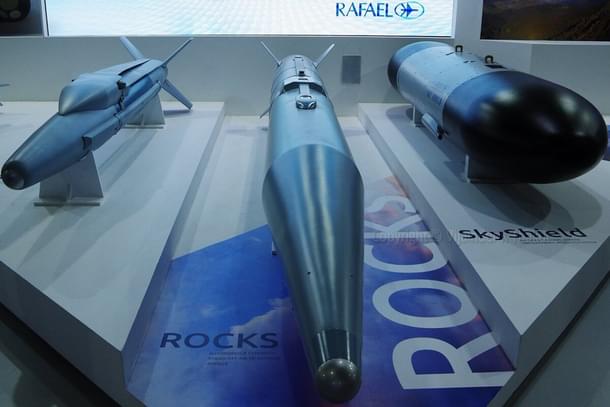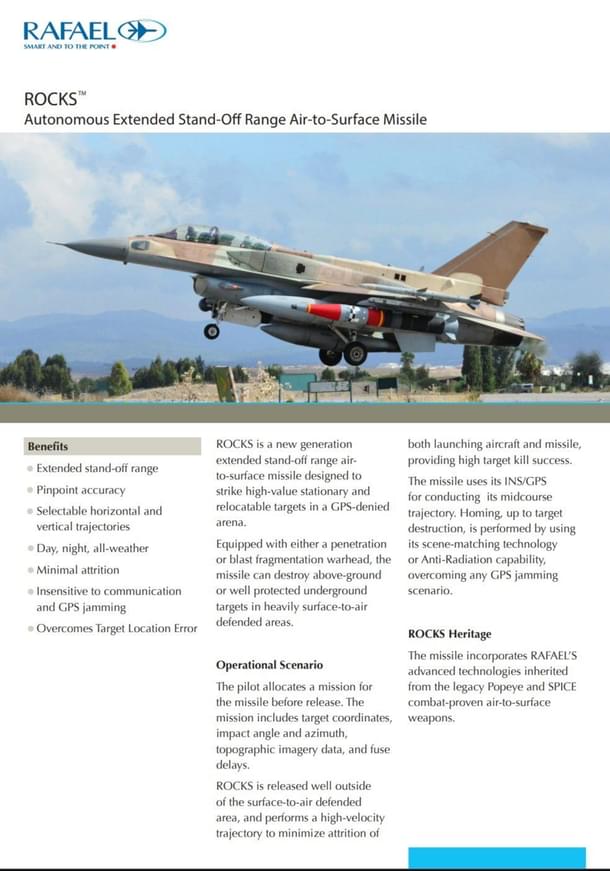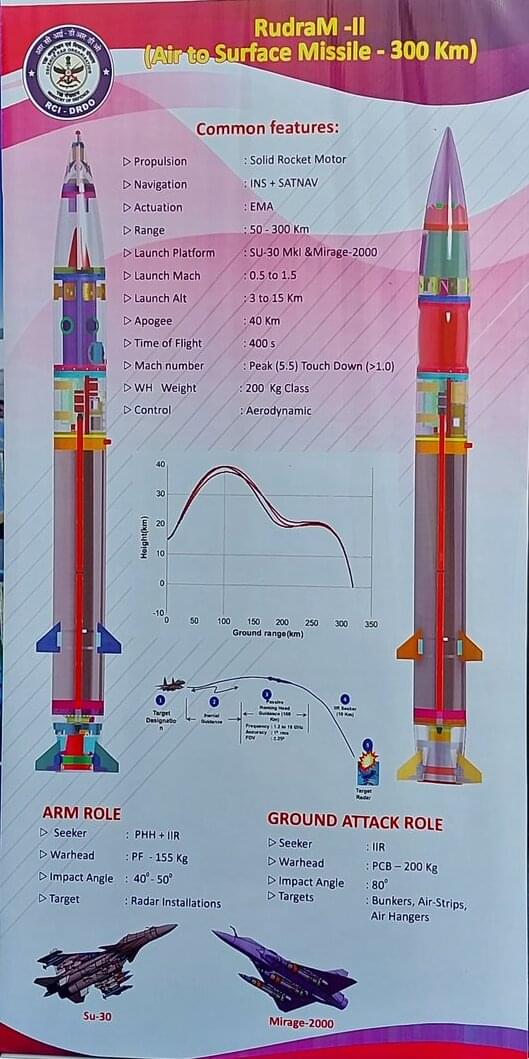Defence
Indian Air Force Just Tested The Missile The Israelis Used To Hit Iran Last Week
Ujjwal Shrotryia
Apr 24, 2024, 05:09 PM | Updated 07:32 PM IST
Save & read from anywhere!
Bookmark stories for easy access on any device or the Swarajya app.


The Indian Air Force (IAF) tested an Israeli missile — ROCKS — from a Sukhoi Su-30 MKI fighter jet from Andaman and Nicobar Islands last week.
This missile was used by the Israeli Air Force to strike Iran last week.
The ROCKS missile, referred to as Crystal Maze 2 in IAF service, was, until now, not known to be in use by the IAF.
ROCKs, designed and developed by Rafael, an Israeli defence major renowned for making the Balakot-air-strike famed Spice-2000 precision-guided munition (PGM) bomb kit, Crystal Maze, and Spike anti-tank guided missile (ATGM), is an air-launched ballistic missile (ALBM) with a range of well over 250 kilometres.
The IAF has plans to induct the missile in large quantities and start large-scale manufacturing of the ALBM in India.

According to Financial Times, the missile was successfully used by Israel to strike Iranian targets last week, where it is claimed to have destroyed a highly advanced and potent Russian-made S-300 air defence system. Its longer-range and upgraded variant, the S-400, is already in service with the IAF.
The missile was successfully able to penetrate the Iranian air defence shield and, that too, the S-300 system’s 30N6E target engagement radar, a system designed to defend against exactly the same class of threats.
The missile is reportedly a modified version of the Blue Sparrow missile — a target missile that Israeli's use to simulate various Iranian ballistic missile targets for training — with a guidance kit from Spice-2000 bombs.
This includes an Inertial Navigation System/Global Positioning System (INS/GPS) based navigation system with an electro-optical (EO) and an Imaging Infrared (IIR) seeker for the terminal phase.
The missile is advertised as capable of penetrating dense air defence networks and finding targets that are protected by heavy GPS-jamming, using its EO/IIR terminal sensor that utilises an image recognition algorithm, and destroying hardened bunkers and deeply buried targets.
This is part of the increasing trend of modern air forces inducting ALBMs into their inventory.
For example, the Russian Kh-47M2 Kinzhal hypersonic missile.
According to defence experts, it is nothing but an Iskander ballistic missile modified for launch from a fighter jet.
ALBMs' high speeds, terminal velocity, to the tune of more than 1 Mach, or more (1 Mach is equal to the speed of sound), high manoeuvrability, and quasi-ballistic trajectory make them extremely difficult to intercept.
India also operates another ALBM, similar to ROCKS, which was also bought from another Israeli company, Israel Aerospace Industries (IAI).

The Indian Navy operates this missile, called Rampage, from its MiG-29K fighter jets.
Rampage is essentially an EXTRA rocket meant to be fired from ground-based multi-launch rocket systems (MLRS), modified to be launched from fighter jets with a strike range anywhere between 150 to 250 kilometres. It uses an INS/GPS kit to find its targets.
Just like ROCKS, Rampage is also used to destroy highly defended hardened bunkers, deeply buried and heavily fortified targets.
India is also working on developing its own ALBMs.
They are the Rudram series of missiles, viz, Rudram-2 and Rudram-3.
Rudram-2 will have a range of 300 kilometres while Rudram-3 will have a range of more than 600 kilometres. Both of these missiles will have two different variants, one with an anti-radiation seeker to destroy air defence radars and, second, with an IIR seeker to destroy heavily fortified bunkers.

Both of these missiles are under development.
The Rudram-2 missile has undergone testing at least once. A Su-30 MKI jet can be seen launching the missile in a teaser video released by the IAF earlier this year.
According to posters released by the Defence Research and Development Organisation, both of these missiles will have a terminal velocity of more than a Mach, making them very hard to defend against.
Staff Writer at Swarajya. Writes on Indian Military and Defence.





